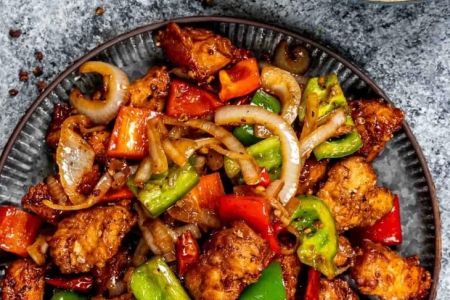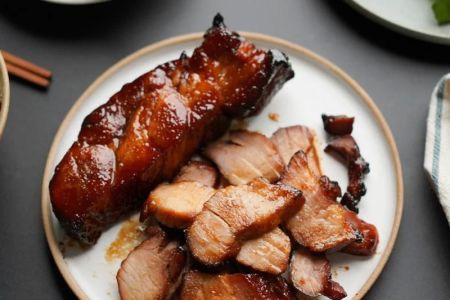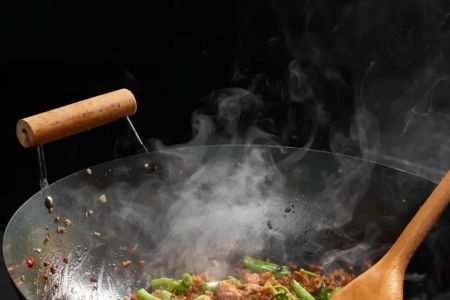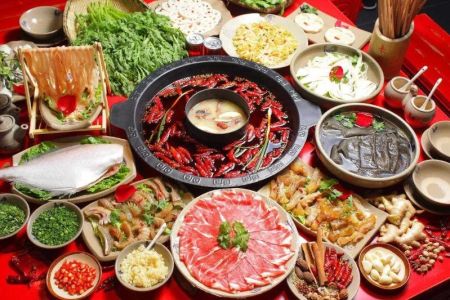What Type of Chicken Do Chinese Restaurants Use?
Chinese restaurants have a unique way of preparing chicken that differs from what we might be used to in traditional American cuisine. Whether you’re enjoying General Tso’s chicken, Kung Pao chicken, or a simple stir-fry, you might have wondered: what kind of chicken do Chinese restaurants use? Having been a regular at several Chinese eateries, I’ve had the chance to explore this question and learn more about the types of chicken used in Chinese dishes.
In Chinese cooking, chicken is often chosen for its versatility and ability to absorb the rich, savory flavors that are common in the cuisine. From tender white meat to juicy dark meat, the choice of chicken cuts can affect the final taste and texture of the dish. Let’s dive deeper into the types of chicken most commonly used in Chinese restaurants and what makes them ideal for Chinese cooking.
1. The Most Common Chicken Cuts Used in Chinese Dishes
In my experience, chicken in Chinese restaurants typically comes in two main cuts: boneless, skinless chicken breast or thighs. Let me start by discussing these cuts, as they are the most common in many popular dishes. When I asked my favorite restaurant owner about this, they told me that boneless, skinless chicken breasts are a popular choice because of their mild flavor and tenderness. They are often sliced thinly and stir-fried with vegetables and flavorful sauces.
On the other hand, chicken thighs are also widely used. I personally find chicken thighs to be a little more flavorful and juicy compared to the leaner chicken breasts. This cut is especially popular in dishes where the chicken is cooked in a sauce or broth, like in the classic "chicken with mushrooms" or "chicken with cashews." The extra fat in chicken thighs helps retain moisture during cooking, which is especially important for stir-fry dishes that require high heat and quick cooking times.
Another thing I noticed in Chinese restaurants is that whole chicken or bone-in chicken pieces are sometimes used, especially for dishes like "beggar’s chicken" or "tea-smoked chicken." The bones give the dish additional depth of flavor, and these cuts are often used in more traditional or specialty dishes.
2. Why Chicken Thighs Are Often Preferred
While I have a soft spot for chicken breasts, I can’t deny that chicken thighs have their own advantages. When I asked the chef at a local Chinese restaurant, they explained that thighs are preferred because of their richer flavor and tender texture. Chicken thighs also perform well in high-heat cooking methods, like stir-frying, because of their slightly higher fat content, which helps keep the meat juicy. In fact, many Chinese restaurant dishes call for the thigh cut to provide a succulent bite and enhance the overall eating experience.
Another reason chicken thighs are a favorite in Chinese restaurants is that they are more forgiving during cooking. While chicken breasts can dry out quickly if overcooked, chicken thighs are more resilient and can withstand the high heat of a wok without becoming tough. I’ve seen this play out when I tried cooking a stir-fry at home; the chicken breasts just didn’t have the same flavor and tenderness as the thighs.
3. The Importance of Fresh, High-Quality Chicken
Something that stands out to me after dining at several Chinese restaurants is how important the quality of chicken is in creating great dishes. Most Chinese restaurants opt for fresh, high-quality chicken, as it makes a noticeable difference in the taste and texture of the dish. As I’ve learned, many restaurants source their chicken from local suppliers who provide fresh, hormone-free poultry, which ensures better flavor.
One of the secrets to the mouthwatering taste of Chinese restaurant chicken is the marinade. The chefs I’ve spoken to often mentioned marinating the chicken in soy sauce, sesame oil, ginger, and garlic, which not only tenderizes the meat but also infuses it with deep, savory flavors. Fresh chicken absorbs these marinades better, resulting in a richer taste that can make all the difference in dishes like "orange chicken" or "sweet and sour chicken."
4. Boneless vs. Bone-In: Which Is Better?
Another point I’ve noticed is the choice between boneless and bone-in chicken. Most Chinese restaurants, especially those serving more casual fare, tend to use boneless chicken because it’s easier and faster to cook. Boneless chicken also makes for easier portioning and is less messy to eat, which is why it’s common in stir-fries and other quick-cook dishes.
However, bone-in chicken is still used in certain traditional dishes that focus on flavor and authenticity. As I’ve experienced, bone-in chicken can offer a richer taste and more complex texture, particularly in slow-cooked dishes or when making broths. Bone-in pieces are often left intact to add depth to dishes like "chicken with Chinese vegetables" or "chicken in spicy sauce," where the bones contribute a fuller, more satisfying flavor.
5. Other Types of Chicken Used in Regional Chinese Dishes
China is vast, and so is its culinary diversity. While chicken breast and thighs are staples in many Chinese restaurants, regional dishes often call for different cuts or even whole chickens. For example, in Sichuan cuisine, you might find dishes like "Mala chicken" where the chicken is chopped into smaller pieces, sometimes with skin-on, to enhance the flavor. These dishes are known for their spicy, numbing heat, and the chicken’s texture can change when cooked with chili peppers and Sichuan peppercorns.
In Cantonese cooking, whole chicken or even parts of the chicken are often steamed or poached to maintain the purity of flavor. I’ve tasted dishes where the chicken is gently cooked with ginger and green onions, and the texture is so tender it practically melts in your mouth. The Cantonese believe in maintaining the natural flavors of the chicken, which is why they prefer less seasoning and cooking methods like steaming or poaching.
6. How to Replicate Chinese Restaurant Chicken at Home
If you’ve ever tried making Chinese food at home, you know that replicating the same restaurant-quality chicken can be challenging. But it’s definitely possible. In my experience, the key is using the right chicken cut for the dish you’re making. For stir-fries, I recommend using boneless, skinless chicken breasts or thighs. For braised or slow-cooked dishes, I suggest using bone-in chicken pieces for richer flavor.
One of the tips I’ve learned is to marinate your chicken for at least 30 minutes to an hour before cooking. This helps tenderize the meat and infuse it with flavors that will make your dish taste just like it came from a Chinese restaurant. Using high-quality, fresh chicken is also crucial. I’ve found that the better the chicken, the better the final dish will turn out. The marinade, combined with the right cooking method, makes all the difference.






![Top Chinese Restaurants for Authentic Cantonese Cuisine in [Your City]](https://img.gochinarose.com/d33/2507/4157910400_450x300.webp)
